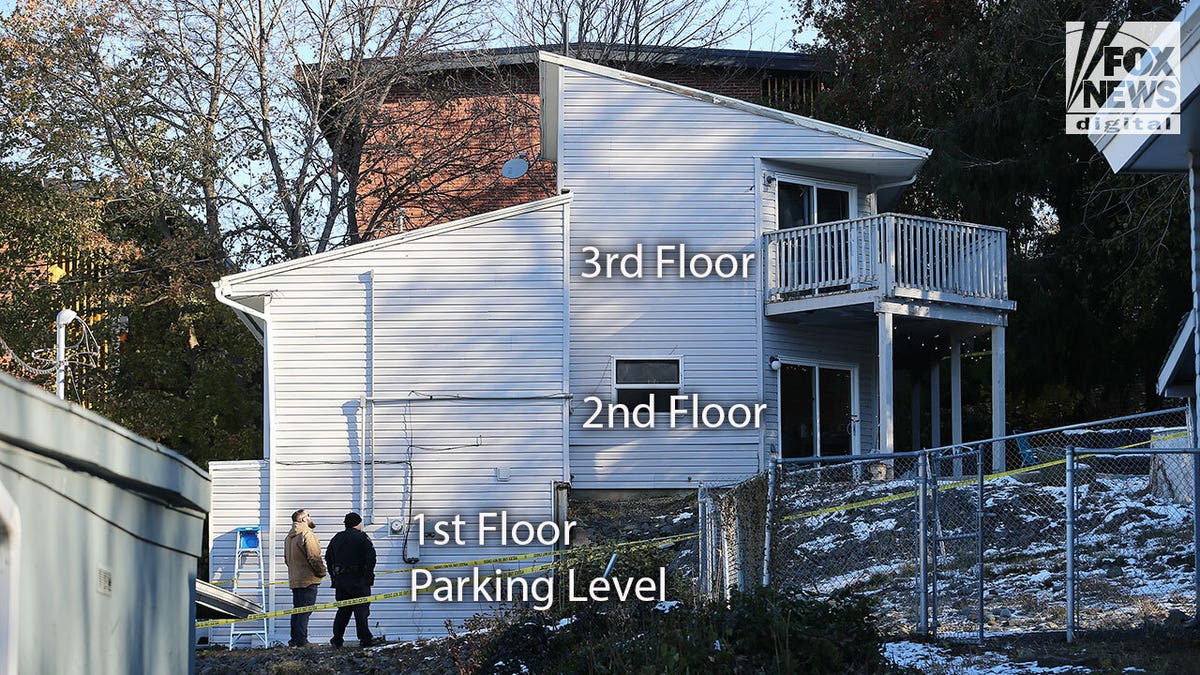Newly unsealed search warrants allege Bryan Kohberger pre-planned Idaho murders
Fox News senior correspondent Laura Ingle provides details from the warrants in the investigation of the four Idaho murders and a new report that Bryan Kohberger sent multiple direct messages to one of the female victims.
Idaho murder suspect Bryan Kohberger was likely motivated by "arousal" and "hatred" when he slipped into an off campus home in the dead of night and allegedly stabbed four students to death, experts told Fox News Digital.
"He would have been in a heightened state of arousal and that means he was emotionally aroused or even sexually aroused as he was killing those girls, and I suspect it was both," said retired FBI profiler Mary Ellen O'Toole.
That heightened state of arousal is driven by hatred, not anger, she added.
"It's a very dark mindset. It's not highly impulsive. It's not reckless. It's ‘I hate this person, they have to die,’" she said.
UNIVERSITY OF IDAHO STUDENT STABBINGS TIMELINE

Bryan Kohberger escorted to court in Pennsylvania prior to his extradition back to Idaho to face charges in the deaths of Maddie Mogen, Kaylee Goncalves, Xana Kernodle and Ethan Chapin. Inset: Kohberger's WSU portrait and the last known image of the victims together (The Image Direct for Fox News Digital, WSU, Instagram)
Kohberger, 28, is charged with murdering Kaylee Goncalves, Madison Mogen, Xana Kernodle and Ethan Chapin Nov. 13 in a rental house in Moscow between 4 a.m. and 4:25 a.m. He has denied the allegations.
Two female roommates – including one who came face-to-face with the killer shortly after the slayings – were unharmed.
IDAHO MURDER VICTIMS' ROOMMATE HEARD CRYING, SAW MAN IN MASK MORNING OF KILLINGS
But O'Toole suspects that the criminology Ph.D. student's main target was Goncalves or her best friend, Mogen, or possibly both women, who were stabbed to death as they slept in the same bed on the third floor of the King Road home.
A Ka-Bar knife sheath was left beside Mogen's body, suggesting that the rampage began in her bedroom before the killer likely descended to the second floor and attacked Chapin and his girlfriend, Kernodle. Chapin did not live at the King Road home.

The home where four University of Idaho students were murdered Nov. 13. (Derek Shook for Fox News Digital)
"Motives for some crimes are unusual in that they lie in the offender," O'Toole told Fox News Digital. "He hated them. He needed them dead. Had they done anything to him? No. The victims were like objects to the killer."
It's unclear if the slain students had ever met Kohberger – but it was revealed Tuesday he had repeatedly sent a series of messages to one of the women on Instagram two weeks before the slayings, People magazine reported.
"He slid into one of the girls' DMs several times but she didn't respond," the source told the publication. "Basically, it was just him saying, 'Hey, how are you?' But he did it again and again."
The report didn't specify which female victim received the messages. O'Toole said the slightest perceived rejection or dismissal could set off a psychopath, whose victims tend to be strangers. She said offenders of this type become "injustice collectors."
BRYAN KOHBERGER CASE: WHY DIDN'T IDAHO ROOMMATE CALL 911 AFTER ENCOUNTERING MASKED MADMAN?
But the victims were allegedly in Kohberger's sights long before his Instagram messages were ignored.
The Washington State University doctoral candidate's cellphone pinged at towers near the crime scene at least 12 times – including on Aug. 21, according to court documents.

The victims of Nov. 13 University of Idaho massacre, from left to right: Kaylee Goncalves, Ethan Chapin, Xana Kernodle and Madison Mogen. (Instagram @xanakernodle / @maddiemogen / @kayleegoncalves)
Chris Swecker, the retired head of the FBI's Criminal Investigation Division, agreed with O'Toole, drawing comparisons to serial killer Ted Bundy.
"You can't project normal motives to a killer like this," he said. "Kohberger was an awkward person, disconnected, on the fringes and margins and not well-adjusted to society."
BRYAN KOHBERGER CASE: KNIFE SHEATH POINTS TO POSSIBLE TARGET, EXPERTS SAY
The victims had a large social media presence and attracted a lot of attention online, Swecker noted.
"We know he was trying to contact one of the victims aggressively and persistently," he said. "Guys like that, I think all their lives they are building up to this point of resentment where it kind of boils over."

Ted Bundy was executed on January 24, 1989. (Getty Images)
Much like Bundy, Kohberger couldn't interact with women in a normal way, Swecker said.
"This was [Kohberger's] way of possessing those women and having total control," Swecker noted of the killings.
Chapin and Kernodle were likely collateral damage and not Kohberger's intended targets, Swecker added.
CLICK HERE TO GET THE FOX NEWS APP
Kohberger is being held at the Latah County Jail without bond. His public defender, Anne Taylor, didn't immediately return a request for comment.






















